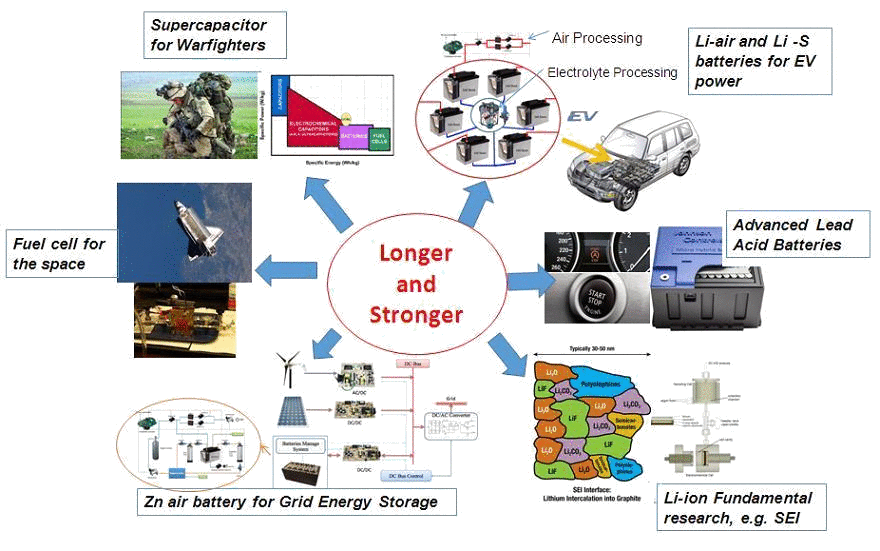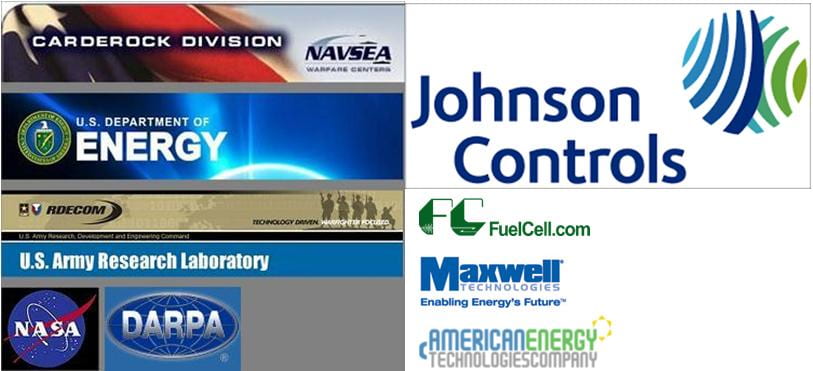The rapid proliferation and commercial success of hybrid vehicles has not only led to an increase in the demand for advanced secondary batteries, but also renewed interest in the development of both the high capacity traction batteries for true electric vehicles and the advanced lead-acid batteries to suit for the micro-hybrid applications, which are believed to be the next generation of transportation for urban commuters.
Renewable energy promises to increase our energy security and improve our environment by reducing the amount of carbon dioxide that is emitted into the atmosphere. With more than 250 million cars and trucks operating on U.S. roads, increasing the use of renewable energy vehicles is critical to realizing these goals.
Longer and stronger energy storage systems are not only critical to national energy independence from foreign oil, the competitiveness of American industries; but also important to the nation’s strong military and space program.
Dr. Qu has been conducting advanced research into renewable energy funded by the Office of Vehicle Technology, Department of Energy; Office of Naval Research; NASA; the Army Research Labs; and DARPA (Defense Advanced Research Projects Agency).
As the first Johnson Controls Endowed Chair, Professor Qu leads a team of students and post-doctoral researchers in UW-Milwaukee and collaborates with Johnson Controls researchers. The team is conducting research targeted at improving and developing the next generation of car batteries. In addition, Dr. Qu is establishing a curriculum to produce highly skilled engineers who are knowledgeable about advanced manufacturing.
Profossor Qu’s researchers are focused on the research and development of renewable energy. The research areas covered are:
- Metal air (Li-air and Zn-air)
- Li-Sulfur
- Advanced Lead-Acid Batteries (ADG and EFB)
- Supercapacitors
- Fuel Cells
- System diagnostics
- Hydrogen Storage Materials
- Alkaline Batteries
The research is funded by the Office of Vehicle Technology, Department of Energy; Office of Naval Research; NASA (ElectroChem Inc.); the Army (Aspen Product Group); DARPA (Defense Advanced Research Projects Agency) and Johnson Controls Inc.

